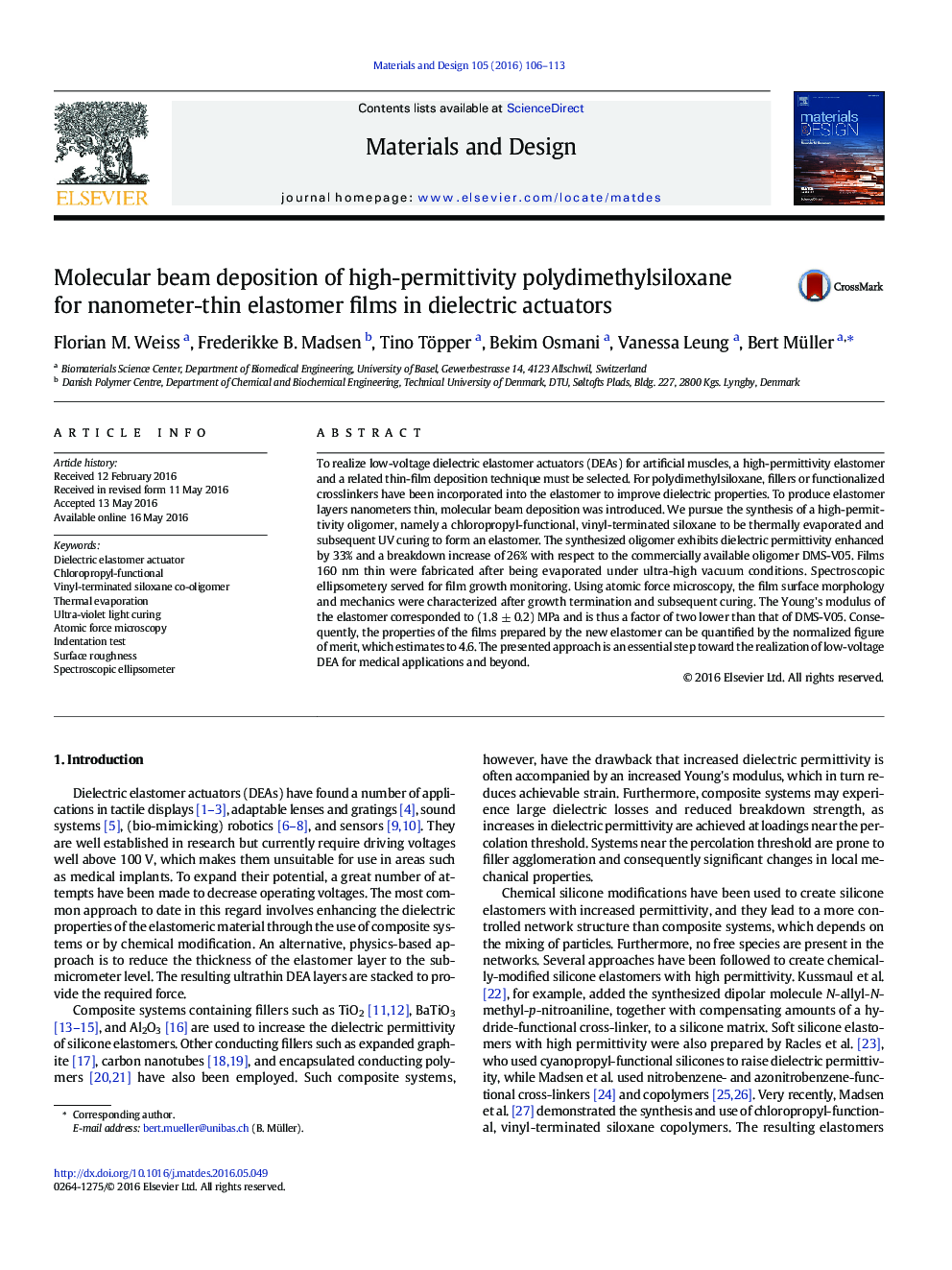| کد مقاله | کد نشریه | سال انتشار | مقاله انگلیسی | نسخه تمام متن |
|---|---|---|---|---|
| 827821 | 1470277 | 2016 | 8 صفحه PDF | دانلود رایگان |
• The new oligomer exhibits dielectric permittivity enhanced by 33% and a breakdown increase of 26% with respect to DMS-V05.
• Molecular beam deposition permits the fabrication of 160 nm-thin layers from the new high-permittivity elastomer.
• Islanding and elastomer film growth and subsequent ultraviolet light curing were quantified by spectroscopic ellipsometry.
• The Young’s modulus of the new elastomer films after UV curing corresponded to (1.8 ± 0.2) MPa.
• The normalized figure of merit of the new elastomer films is 4.6, an essential step toward low-voltage DEAs.
To realize low-voltage dielectric elastomer actuators (DEAs) for artificial muscles, a high-permittivity elastomer and a related thin-film deposition technique must be selected. For polydimethylsiloxane, fillers or functionalized crosslinkers have been incorporated into the elastomer to improve dielectric properties. To produce elastomer layers nanometers thin, molecular beam deposition was introduced. We pursue the synthesis of a high-permittivity oligomer, namely a chloropropyl-functional, vinyl-terminated siloxane to be thermally evaporated and subsequent UV curing to form an elastomer. The synthesized oligomer exhibits dielectric permittivity enhanced by 33% and a breakdown increase of 26% with respect to the commercially available oligomer DMS-V05. Films 160 nm thin were fabricated after being evaporated under ultra-high vacuum conditions. Spectroscopic ellipsometery served for film growth monitoring. Using atomic force microscopy, the film surface morphology and mechanics were characterized after growth termination and subsequent curing. The Young's modulus of the elastomer corresponded to (1.8 ± 0.2) MPa and is thus a factor of two lower than that of DMS-V05. Consequently, the properties of the films prepared by the new elastomer can be quantified by the normalized figure of merit, which estimates to 4.6. The presented approach is an essential step toward the realization of low-voltage DEA for medical applications and beyond.
Figure optionsDownload as PowerPoint slide
Journal: Materials & Design - Volume 105, 5 September 2016, Pages 106–113
